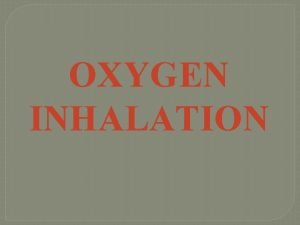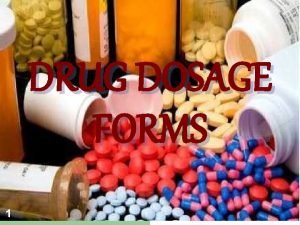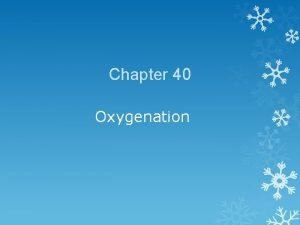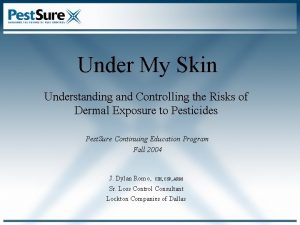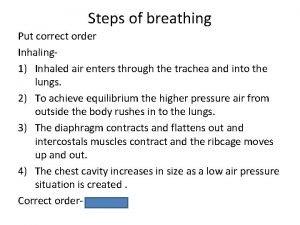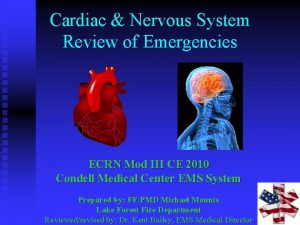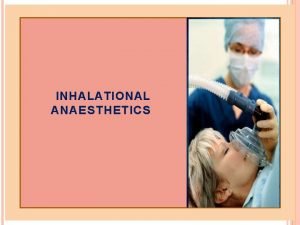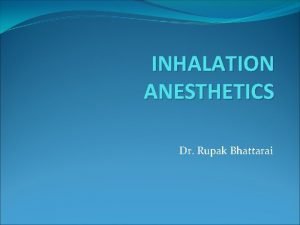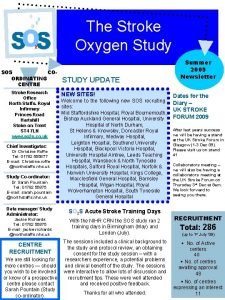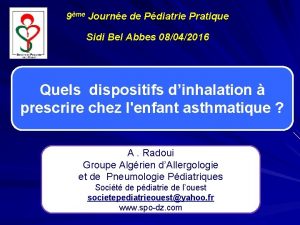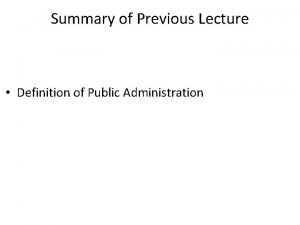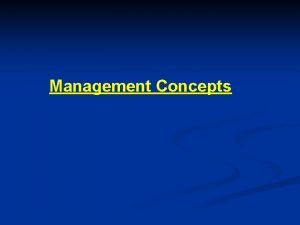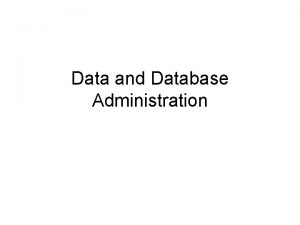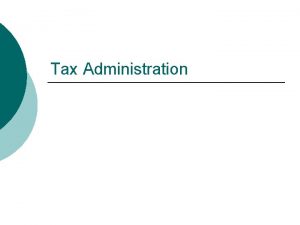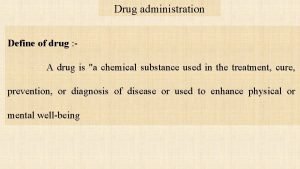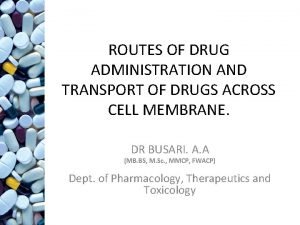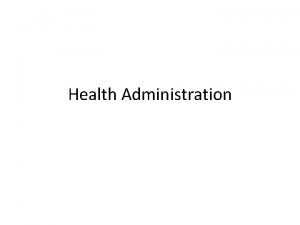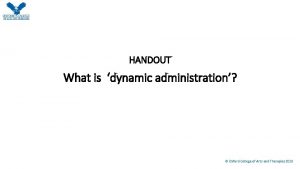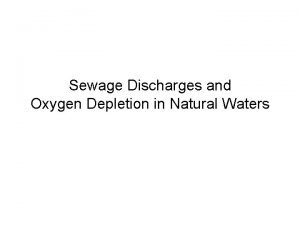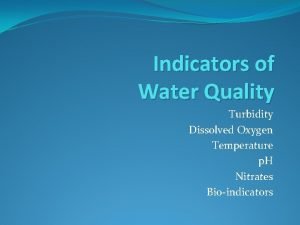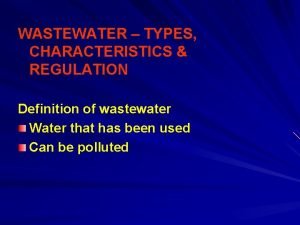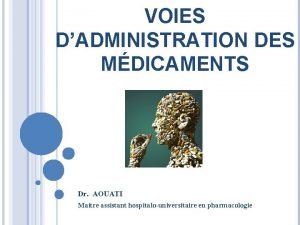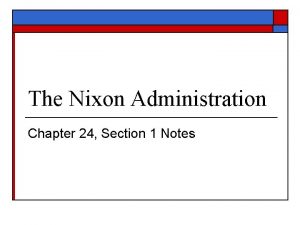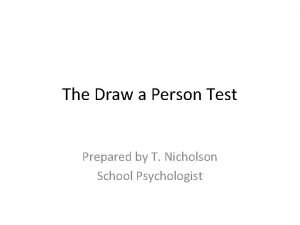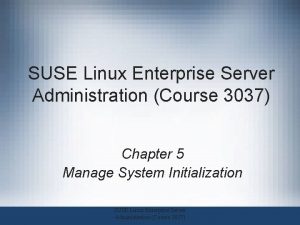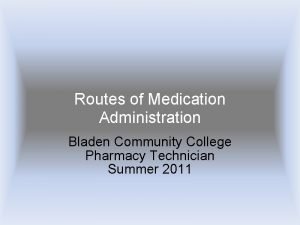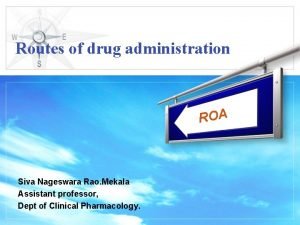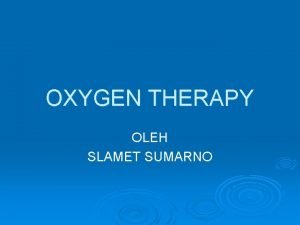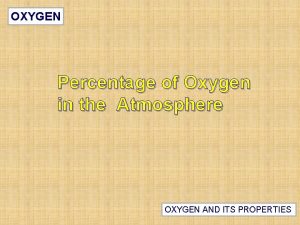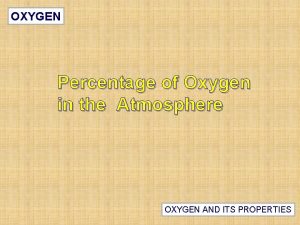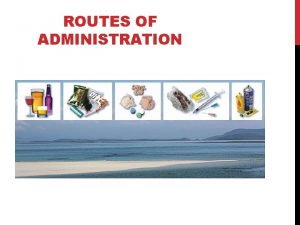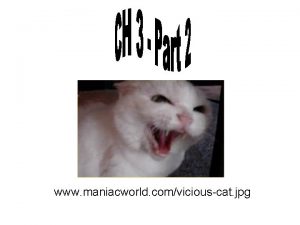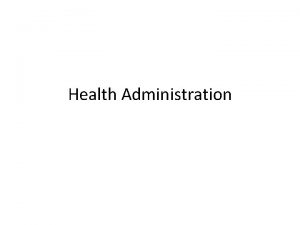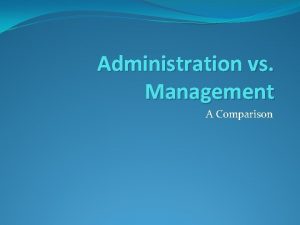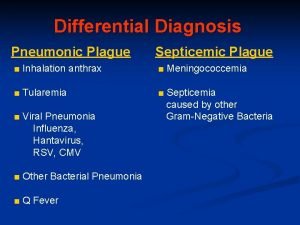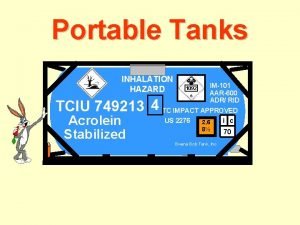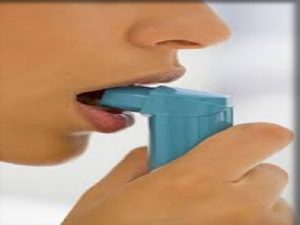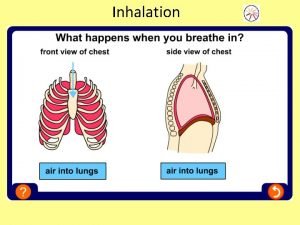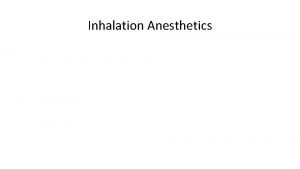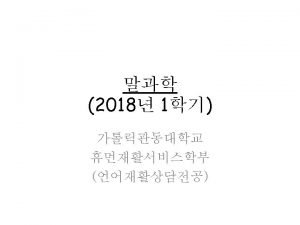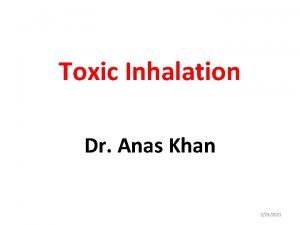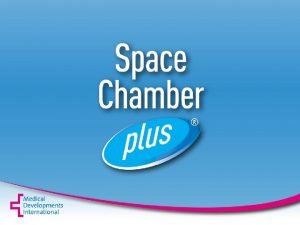OXYGEN INHALATION DEFINITION Administration of oxygen is a












































- Slides: 44

OXYGEN INHALATION

DEFINITION

Administration of oxygen is a process of providing the 02 supply to child for the treatment of low concentration of 02 in the blood. Children with respiratory dysfunctions are treated with oxygen inhalation to relieve anoxaemia or hypoxaemia (deficiency of oxygen in the blood). The normal amount of oxygen in the arterial blood should be in the range of 80 to 100 mm of Hg. If it falls below 60 mm of Hg; irreversible physiologic effects may occur. The oxygen administration treats the effects of oxygen deficiency but it does not correct the underlying causes


PURPOSES OF OXYGEN INHALATION

• To manage the condition of hypoxia • To -maintain the oxygen tension in blood plasma • To increase the oxy hemoglobin in red blood cells • To maintain the ability of cells to carry out the normal metabolic function • To reduce the risk of complications

COMMON INDICATIONS FOR OXYGEN ADMINISTRATION

Cyanosis: Bluish discoloration of skin, nail buds, mucus membranes, resulting from a decreased amount of oxygen in the hemoglobin of the blood.

Breathlessness or labored breathing: By some diseases such as - emphysema, pulmonary embolism, coronary thrombosis etc.

Anemia Diseases such as - pulmonary edema, pneumonia, chest trauma etc Environment with low oxygen content e. g. high attitudes Poisoning with chemicals that alter the tissues ability to utilize oxygen e. g. cyanide poisoning Hemorrhage

ARTICLES NEEDED FOR OXYGEN ADMINISTRATION

Oxygen source - 02 cylinder, central supply

Oxygen instrument according to methods like – oxygen mask, oxygen hood, nasal prongs, nasal catheter, oxygen tent or canopy

Humidifier

Flow meter

Gauze pieces Adhesive tape

‘No smoking' signs

Spinner to open the main valve of oxygen cylinder

Bowel with water to check the patency of the tube

METHODS OF OXYGEN ADMINISTRATION

Oxygen administration depends upon the condition of child, age, concentration desired, facilities available and the preference of the doctor. Oxygen administration can be given continuously or intermittently. It depends on the requirement of the child. It is given in 40 to 60 percent concentration. There are following methods of oxygen administration

ADMINISTRATION OF 02 BY NASAL CATHETER This is very common method of 02 administrations in hospital settings. A catheter is inserted into the nostril reaching up to the uvula and is held in place by adhesive tapes This catheter does not interfere with the Childs freedom to eat, to talk and to move on the bed. Catheter no. 4 to 6 is used and it should be 7. 5 to 10 cm inserted in the naso pharynx. The catheter should be removed every 8 hourly, and new catheter should be inserted by using other nostril alternatively. Catheter method is used for the older children. The amount of oxygen should be 4 liter per minute


ADMINISTRATION OF OXYGEN BY THE MASK Today, there are various face masks available that cover the Childs mouth and nose for 02 administration. The mask size should be according to the child's size. It should be properly fitted and if it does not fit properly, 02 will be lost from the mask. It should be removed after every four hours and-wine the face. The masks are advantageous for those patients who are unable to breathe through nose. The flow of oxygen should be about 2 -3 litre for young children and 1 -2 litre/minute for the infants.


ADMINISTRATION OF OXYGEN BY THE TENT METHOD The oxygen tent method consists of a canopy over the patients bed, that cover the patient fully or partially. Oxygen tent is made up of plastic material, transparent and prevent absorption of oxygen. The lower part of the canopy is tucked under the bed to prevent the escape of oxygen. There are certain advantages and disadvantages for using a oxygen tent method. Oxygen tent provides the environment for the patient with controlled oxygen concentration, temperature regulation and humidity control.


PROCEDURES

Assemble the 02 headbox Place the headbox properly covering head, face and neck. Seal the opening of headbox around neck to minimize 02 leaking Attach thermometer probe to head box via aperture or use disposable thermometer

Adjust 02 and air flow rates to achieve prescribed oxygen concentration the total flow should be between 6 and 8 liters per minute to prevent accumulation of carbon dioxide in the head box. Place sensor of oxygen analyzer into headbox alongside infant's nose (within 8 cm) to check oxygen concentration in headbox

NURSING PRINCIPLES

Monitor oxygen concentration hourly Check frequently for loose connections in the circut Ensure position of oxygen analyzer sensor is close to infant's nose and not in mainstream of the oxygen hose Maintain the infant's head inside the headbox Fill humidifier to appropriate level with distilled water PRN

G. Maintain inspired gas temperature as indicated below Weight in kg 0. 5 1 2 3 4 Temperature=C 35 -37 34 -36 33 -35 31 -34 30 -33 All procedures through open incubator doors or with infant partially out of the incubator should be carried out with the infant in headbox or with a mask connected to gas supply, and close to the infant's nose.

DISADVANTAGES • It creates a feeling of isolation. • It requires high volume of oxygen which is not easily available. • When tent is opened, there is loss of 02 concentrations • It has more chances of fire. • It requires more time and cleanliness to maintain a tent.

COMPLICATIONS OF 0 XYGEN ADMINISTRATIONS

Infection: By using the contaminated equipments, the causative organisms can be present in such places as tracheotomy or endotracheal tubes, catheters, humidifying water and masks etc. Drying of mucus membrane of the respiratory tract: It can occur when oxygen is administered without sufficient humidity. It can cause irritation and drying of the mucus membrane. Combustion (fire) : 02 itself does not burn, but it supports combustion.

Oxygen toxicity: Symptoms of toxicity includes tracheal irritation and cough. Atelectasis: Collapse of alveoli develops as a result of increased oxygen concentration in the inspired air. This is due to elimination of nitrogen. Oxygen induced apnoea: The carbon dioxide is washed off completely from the blood by a high concentration of oxygen. The respiratory center is not stimulated sufficiently.

Asphyxia: Patient who receives 02 by masks and close tents must be protected from asphyxia. Retrolental fibroplasia: The hazards of oxygen may affect the eyes. It is noted in premature infants who have a high concentration of oxygen inhalation. Some others are - Bronchopulmonary, dysplasia, respiratory depression, seizure disorders and epilepsy.

IMPORTANT INSTRUCTIONS FOR OXYGEN INHALATION

Oxygen should be prescribed in specific dose. It acts as a drug and cause oxygen toxicity. Always use humidifier and regulator. All the articles should 'be cleaned and use the disposable nasal catheter and change the nasal catheter every 8 hourly. Lubricate the nasal catheter before inserting.

Control valve of cylinder should be adjusted only when catheter is out of nose. or during oxygenation, do not alter the valve. Discontinue of oxygen should be gradually. Leave a calling signal or bell near the patient while going away from the patient. Keep in close observation conditions, which can interfere with the flow of oxygen from the source to the patient. Keep ready one cylinder to prevent the deprivation of oxygen.

Give oxygen in low concentration to the premature babies to prevent the. retrolental fibroplasia. Continuously monitoring of patient to find out the oxygen toxicity symptoms. Empty cylinder should mark "empty" and keep separately from full cylinders.

While oxygen administration, paste the "No Smoking" signs, near the patient bed or on the door. Proper recording and reporting should be followed

 Definition of oxygen inhalation
Definition of oxygen inhalation Gels dosage form
Gels dosage form Lifestyle factors affecting oxygenation
Lifestyle factors affecting oxygenation Inhalation route
Inhalation route Breathing order
Breathing order Concrete dust inhalation
Concrete dust inhalation Widowmaker heart attack smoke inhalation
Widowmaker heart attack smoke inhalation Minimum alveolar concentration
Minimum alveolar concentration Nitric oxide properties
Nitric oxide properties Inhalation anesthetics
Inhalation anesthetics O2 inhalation sos
O2 inhalation sos Chambre d'inhalation cipla
Chambre d'inhalation cipla Personnel administration
Personnel administration Definition of administration
Definition of administration Database administration definition
Database administration definition Tax administration ne demek
Tax administration ne demek Angesid
Angesid Route of drug administration definition
Route of drug administration definition Poli 213
Poli 213 Health administration definition
Health administration definition Dynamic administration definition
Dynamic administration definition Oxygen sag definition
Oxygen sag definition Dissolved oxygen meaning
Dissolved oxygen meaning Characteristics definition
Characteristics definition Laura herrera scott
Laura herrera scott Salary administration
Salary administration Voie d'administration sans effraction
Voie d'administration sans effraction Vietnam meteorological and hydrological administration
Vietnam meteorological and hydrological administration Transcontinental railroad apush
Transcontinental railroad apush Chapter 24 section 1: the nixon administration answers
Chapter 24 section 1: the nixon administration answers Chapter 32 section 1 the nixon administration
Chapter 32 section 1 the nixon administration Chapter 32 section 1 the nixon administration
Chapter 32 section 1 the nixon administration National academy for public administration
National academy for public administration Draw a person test
Draw a person test Conclusion of management
Conclusion of management Suse linux administration
Suse linux administration Linux operation and administration chapter 8
Linux operation and administration chapter 8 Route of administration of lozenges
Route of administration of lozenges Roa drugs
Roa drugs State geodetic administration
State geodetic administration Scope of public administration
Scope of public administration 6 generic administrative functions
6 generic administrative functions Public administration n5 module 1
Public administration n5 module 1 Public and private administration
Public and private administration Difference between administration and management
Difference between administration and management
